It starts with a cold. A stuffy nose, a scratchy throat, and a cough that won’t quit. You grab a bottle of cough syrup from the pharmacy shelf-something you’ve used before, something labeled OTC, something safe. The label says: Take 10 mL every 4 to 6 hours. But some people don’t stop at 10 mL. They take 100 mL. Or 200. Or they drink entire bottles. And that’s when things go very wrong.
What Is Dextromethorphan, Really?
Dextromethorphan, or DXM, is a synthetic cough suppressant. It’s not a narcotic. It doesn’t relieve pain. It doesn’t make you sleepy like codeine. When taken as directed-15 to 30 mg every 4 to 8 hours-it works by quieting the cough reflex in your brain. It’s in more than 70 over-the-counter products: Robitussin DM, NyQuil, DayQuil, Benylin DM, Coricidin, TheraFlu, and dozens more. You’ll see “DM” on the label, or “cough suppressant,” or sometimes “Tuss” in the name. It’s cheap. It’s legal. And it’s everywhere.
But when you take way more than the label says-240 mg, 500 mg, even up to 1,500 mg at once-DXM stops being a cough medicine. It becomes a powerful dissociative drug. At those doses, it affects the same brain receptors as ketamine and PCP. People call it “robo tripping,” “dexing,” or “candy.” The effects aren’t subtle. You might feel like you’re floating outside your body. Colors look brighter. Sounds warp. You lose coordination. Your vision blurs. Your speech slurs. Some people feel intense euphoria. Others feel panic, paranoia, or hallucinations.
How Do People Abuse It?
Most teens and young adults don’t start by buying pure DXM powder. They start with what’s already on the shelf. They drink cough syrup like it’s soda. Some call it “the poor man’s PCP” because it’s cheap and easy to get. You don’t need a dealer. You don’t need to sneak into a party. You just need a trip to the pharmacy and a little cash.
There are different ways people push past the safe dose. One common method is the “robo shake”-drink a large amount of syrup, then make yourself throw up. The idea is to keep the DXM in your system while getting rid of the other ingredients that cause nausea and stomach pain. It’s dangerous. Vomiting doesn’t remove all the toxins, and it can lead to dehydration, electrolyte imbalances, or even aspiration.
Some users go further. They extract pure DXM from the syrup using simple chemistry-vinegar, water, and filters. Online forums and YouTube videos show how to do it. The result? A white powder or concentrated liquid. This powder is far more dangerous. It’s easy to misjudge the dose. One teaspoon can be a lethal amount. People snort it. They swallow capsules they’ve made themselves. There’s no safety net. No controlled dosage. No warning labels.
The Plateaus: What Happens at Different Doses
DXM doesn’t just make you feel “high.” It creates distinct stages, called plateaus, each with more intense effects:
- First plateau (100-200 mg): Mild stimulation, euphoria, slight dizziness. People often mistake this for just feeling “buzzed.”
- Second plateau (200-400 mg): Visual distortions, altered sense of time, numbness, and impaired motor skills. You might feel detached from your surroundings.
- Third plateau (400-600 mg): Strong dissociation. Out-of-body experiences. Hallucinations. Confusion. Loss of coordination. This is where people stop recognizing reality.
- Fourth plateau (600+ mg): Complete disconnection from the body. Amnesia. Severe confusion. Risk of coma. Respiratory depression. Death.
These aren’t just “bad trips.” They’re medical emergencies. One study found that over 60% of teens who abused DXM experienced vomiting, dizziness, or blurred vision within an hour. More than 1 in 5 had heart palpitations or high blood pressure.

When DXM Turns Deadly
The biggest danger isn’t just DXM alone. It’s what people mix it with.
Many cough syrups contain acetaminophen (Tylenol), pseudoephedrine, or antihistamines. Taking too much acetaminophen can cause liver failure. Pseudoephedrine raises blood pressure to dangerous levels. Antihistamines can cause seizures. Combine any of these with high-dose DXM, and the risk skyrockets.
People also mix DXM with alcohol, MDMA, or antidepressants. The combination with alcohol is especially deadly. Both depress the central nervous system. Together, they can shut down breathing. The Mount Sinai Health Library reports cases where teens died after drinking DXM syrup and beer together.
And then there’s the long-term damage. Repeated abuse can lead to memory loss, depression, anxiety, and permanent cognitive problems. Some users develop a tolerance. They need more and more to get the same effect. That’s addiction-even though the government says DXM isn’t addictive, treatment centers see patients who can’t stop. They crave the dissociation. They feel numb without it.
Who’s Using It-and Why
It’s mostly teens and young adults. The National Institute on Drug Abuse found that nearly 3% of U.S. teens admitted to abusing cough medicine to get high. That’s about 1 in 30. In 2015, almost 5% of high school seniors had done it in the past year.
Why? Three reasons: it’s cheap, it’s easy, and no one thinks it’s a big deal. A bottle of Robitussin costs $8. A bag of marijuana? $50. A pill of ecstasy? $15. And because it’s sold next to toothpaste and bandages, parents don’t lock it up. Schools don’t teach about it. Most adults think, “It’s just cough syrup.”
But the street names tell a different story: “C-C-C,” “Robo,” “Red Devils,” “Orange Crush.” These aren’t just slang. They’re signals. Kids know what they mean. And they’re using them.
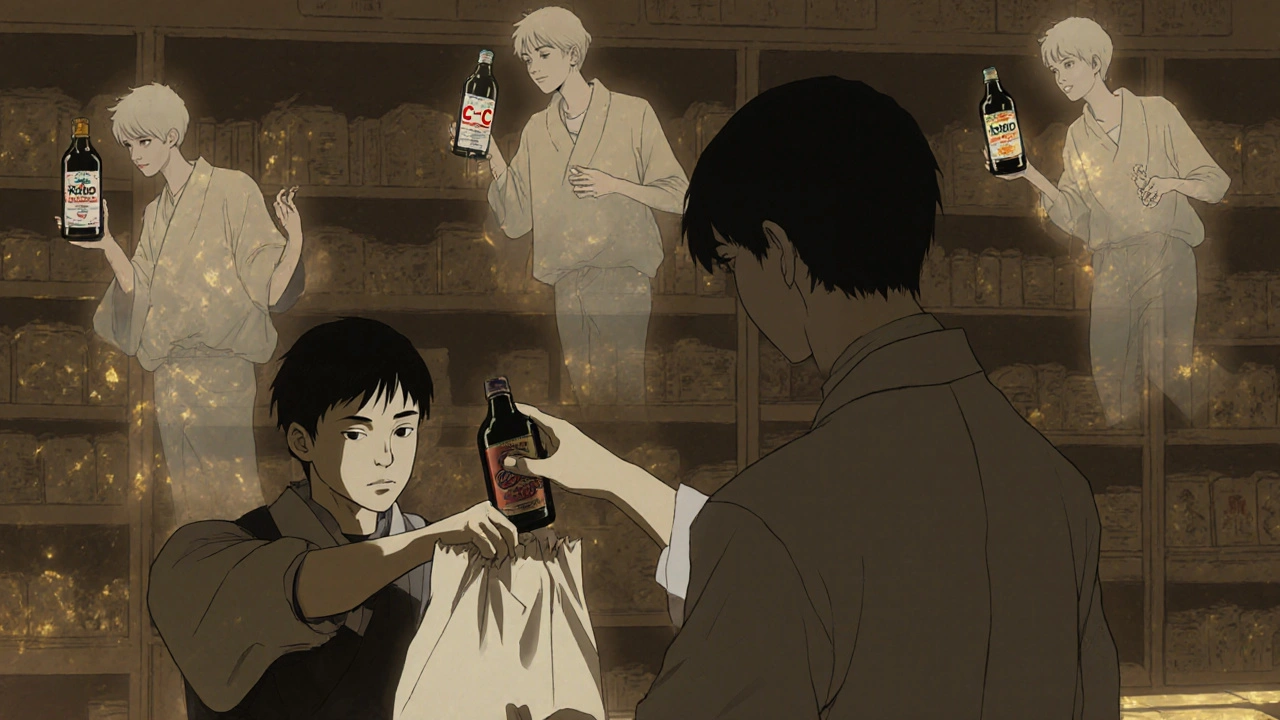
What’s Being Done-and What’s Not
Some states have passed laws to restrict sales. You need to show ID. You can only buy one bottle at a time. Pharmacies put DXM products behind the counter. But these rules aren’t consistent. In some places, you can still walk out with three bottles without a second glance.
The pharmaceutical industry has tried to help. The Consumer Healthcare Products Association (CHPA) works with manufacturers to add warning labels and reduce the amount of DXM in some products. But they’re not banning it. They’re not removing it from shelves. Because it still works as a cough suppressant. And because it’s profitable.
The DEA has watched DXM abuse for years. In 2004, they warned it might be added to the Controlled Substances Act. It hasn’t happened yet. Why? Because it’s not heroin. It’s not cocaine. It’s cough syrup. But the deaths keep happening.
What You Can Do
If you’re a parent: Check your medicine cabinet. Look for bottles with “DM” on the label. Don’t assume your teen doesn’t know about it. Ask them directly. Not in a scary way. Just: “Have you ever heard of people drinking cough syrup to get high?” If they say yes, don’t panic. Listen. Then talk about the risks.
If you’re a teen: You might think you’re in control. That you can stop anytime. But DXM doesn’t play fair. One bad dose can change your life. Or end it. If you’ve tried it once, you know how it feels. Don’t do it again.
If you or someone you know has taken too much DXM: Call 911. Don’t wait. Don’t try to sleep it off. Don’t hope it’ll pass. It might not. Survival depends on how fast you get to a hospital.
DXM isn’t the enemy. The problem is the belief that because it’s sold over the counter, it’s harmless. That’s a lie. And people are dying because of it.
Can you get addicted to DXM?
Yes. While some government agencies claim DXM isn’t addictive, treatment centers report increasing cases of dependence. People who use it regularly develop tolerance, needing higher doses to feel the same effects. Many describe strong cravings and emotional withdrawal symptoms like anxiety and depression when they stop. Even though it’s not a traditional opioid, the psychological reliance can be real and difficult to overcome without professional help.
Is DXM abuse only a problem for teens?
No. While most cases involve teens and young adults, adults also abuse DXM-especially those with untreated mental health conditions or a history of substance use. The rise of online DXM powder sales has made it easier for older users to access pure forms, increasing risks for all age groups. It’s not just a “teen problem.” It’s an underreported public health issue.
How can you tell if someone is abusing DXM?
Signs include empty cough syrup bottles hidden in rooms, frequent trips to the pharmacy, slurred speech, unexplained dizziness or nausea, blurred vision, sudden mood swings, or acting disconnected from reality. You might also notice them avoiding eye contact, wearing sunglasses indoors, or using phrases like “dexing” or “robo.” If someone is buying multiple bottles at once or hiding them, that’s a red flag.
What should you do if someone overdoses on DXM?
Call emergency services immediately. Do not wait for symptoms to worsen. Do not try to make them vomit unless instructed by a medical professional. Keep them awake and sitting up if possible. If they’re unconscious or having trouble breathing, place them on their side to prevent choking. Bring the cough syrup bottle with you to the hospital-it helps doctors identify the exact ingredients and dosage.
Are there safe alternatives to DXM for cough relief?
Yes. For dry coughs, honey (especially for adults and children over 1 year) is as effective as DXM and has no risk of abuse. For chest congestion, guaifenesin (found in Mucinex) helps loosen mucus without the dissociative effects. Staying hydrated, using a humidifier, and resting are also proven methods. Always check with a pharmacist before choosing a product-many OTC cough medicines contain unnecessary or risky ingredients.

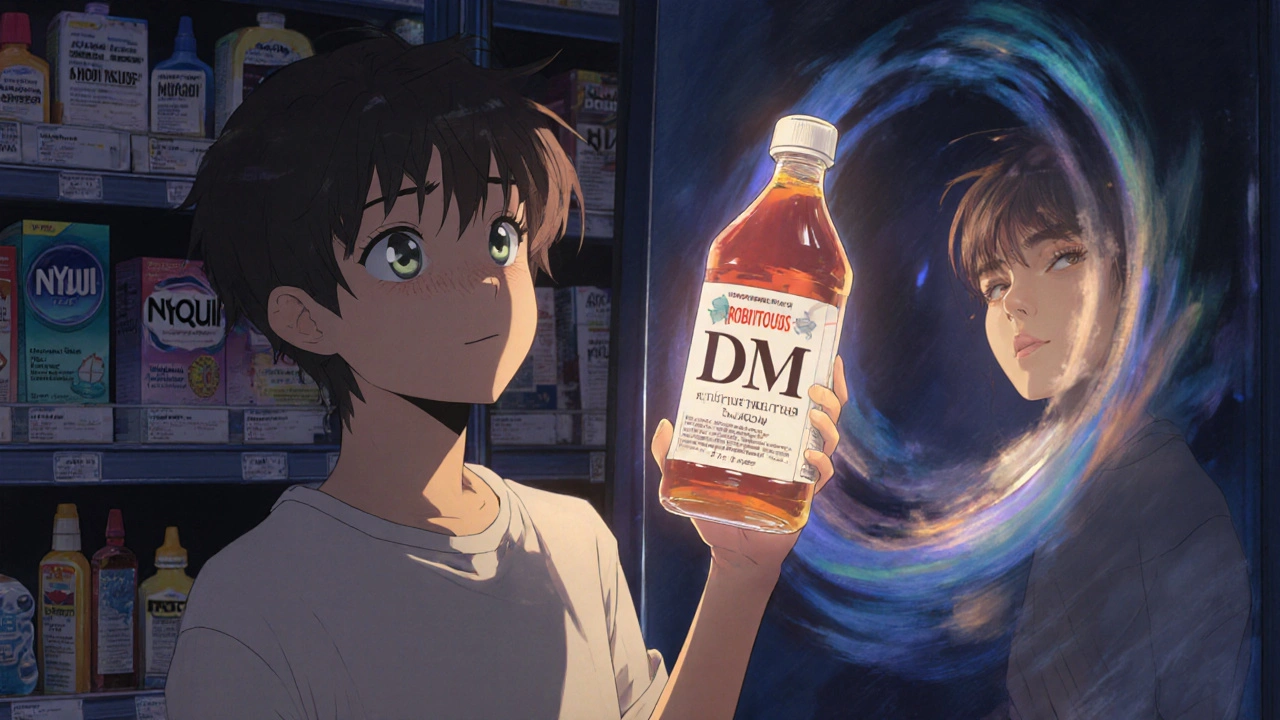
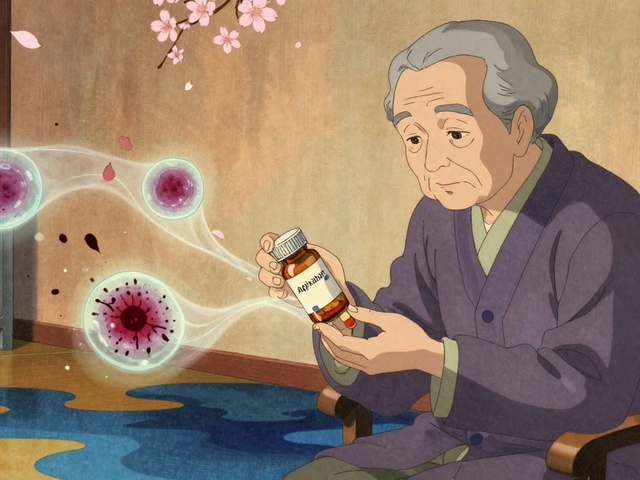
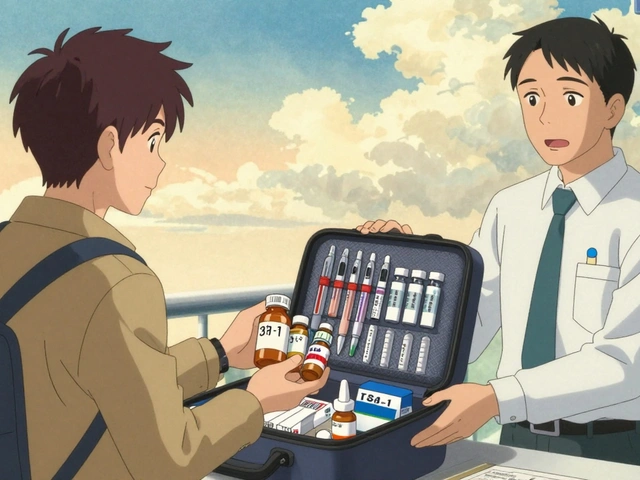

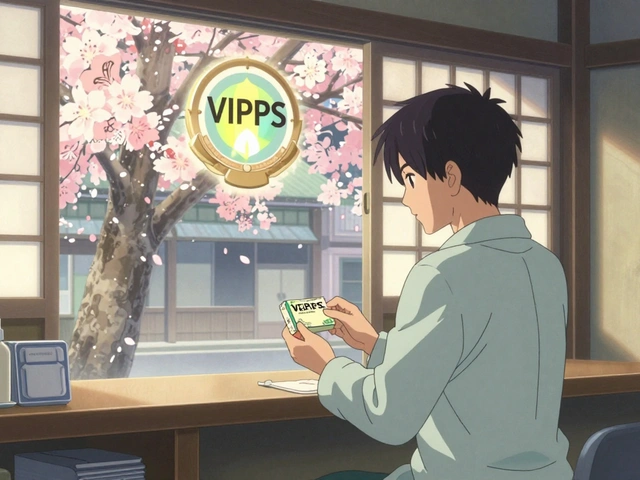
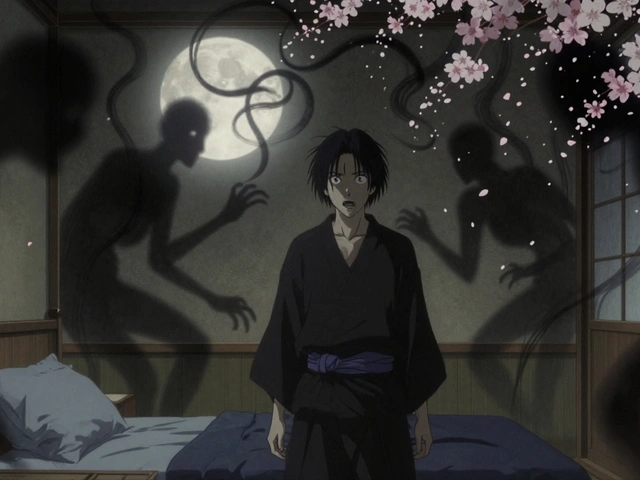




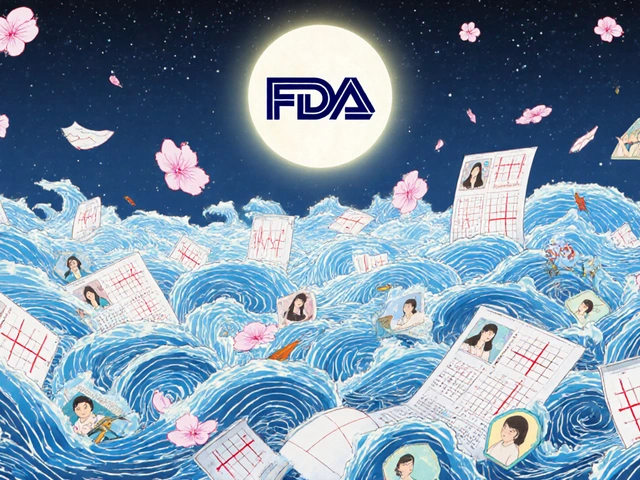
Amy Hutchinson
23 Nov, 2025
I saw my cousin do this last year. She drank a whole bottle of Robitussin because she thought it'd make her feel 'free'. Ended up in the ER with her heart racing and screaming about the walls breathing. Her mom had no idea what was going on until they found empty bottles under her bed. Don't mess with this stuff.
Archana Jha
24 Nov, 2025
this is all a psyop by big pharma to sell more antidepressants lol they dont want you to know dxm is the real cure for depression its just that they made it illegal in 2004 but hid it behind 'safety concerns' and now everyone thinks its a teen fad when its actually a spiritual gateway lol
Aki Jones
26 Nov, 2025
Let’s be real: the FDA knew this was a problem by 1998. They had data. They had case reports. They had尸检 results. And yet? Nothing. Why? Because the CHPA lobbied harder than the NRA. And now? Kids are dying. And the only ‘solution’ is putting it behind the counter like it’s a pack of cigarettes. Pathetic.
Jefriady Dahri
26 Nov, 2025
I’ve seen friends go through this. One guy started with cough syrup, ended up in rehab. He said it wasn’t about getting high-it was about feeling nothing. That’s the saddest part. 🙏 If you’re reading this and you’re doing this to escape… please reach out. You’re not alone.
Sharley Agarwal
26 Nov, 2025
Teenagers are dumb.
Shivam Goel
28 Nov, 2025
The fact that you can buy 500mg of DXM in a single bottle and call it ‘safe’ is a statistical crime. The LD50 isn’t even well-documented because the FDA refuses to classify it. Meanwhile, people are mixing it with NyQuil-which has 650mg of acetaminophen per 30mL. That’s 2g of liver-killer per bottle. And no one bats an eye.
Andrew Camacho
29 Nov, 2025
Oh wow, another ‘awareness’ post. You know what’s worse than DXM abuse? Parents who don’t lock up their medicine cabinets. Or schools that teach ‘drugs are bad’ but never explain WHY. You want to stop this? Start by teaching chemistry in middle school. Not just ‘don’t do drugs’-teach them what’s actually in that bottle. Otherwise, this cycle just keeps spinning.
Arup Kuri
30 Nov, 2025
People think its just a cough medicine so they dont care but its the same as snorting coke if you think about it because its legal so its fine right? Everyone is just waiting for someone to die so they can say i told you so
Elise Lakey
1 Dec, 2025
I’ve been sober from DXM for 18 months now. I started at 16 because I thought it was harmless. I didn’t realize I was dissociating from my own life until I couldn’t remember my sister’s birthday. It wasn’t the high I missed-it was the numbness. Therapy helped. So did journaling. I’m not proud of it. But I’m here.
Erika Hunt
2 Dec, 2025
I think what’s really missing here is the emotional context-why people turn to this in the first place. It’s not just curiosity. It’s loneliness. It’s trauma. It’s feeling invisible in a world that doesn’t listen. I’ve seen kids who’ve lost parents, been bullied, or been told they’re ‘too sensitive’-and then they find this chemical escape. It’s not about the drug. It’s about the silence around them. We need more compassion, not just more regulations.
prasad gaude
2 Dec, 2025
In India, we call it 'candy' too. But here, it's mostly sold in small roadside pharmacies, no ID needed. I saw a 14-year-old buy three bottles last month. The guy behind the counter just smiled and said, 'It's just syrup, beta.' We don't talk about mental health here. So kids find their own ways to cope. This isn't just an American problem-it's a global silence.
Timothy Sadleir
4 Dec, 2025
The ethical imperative here is clear: if a substance possesses dissociative properties at supra-therapeutic dosages, and if those dosages are readily accessible without medical oversight, then its classification as an over-the-counter pharmaceutical is a regulatory failure of monumental proportions. The absence of federal control does not equate to safety. It equates to negligence.